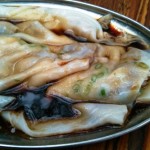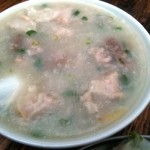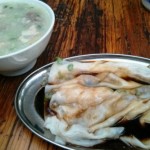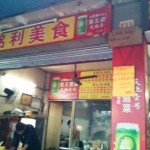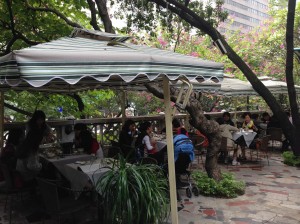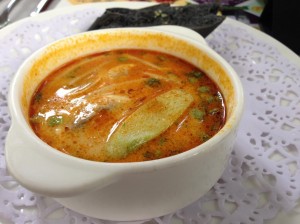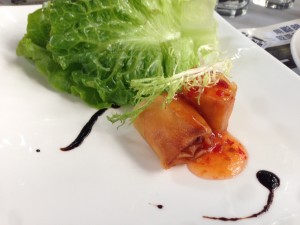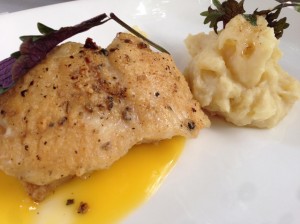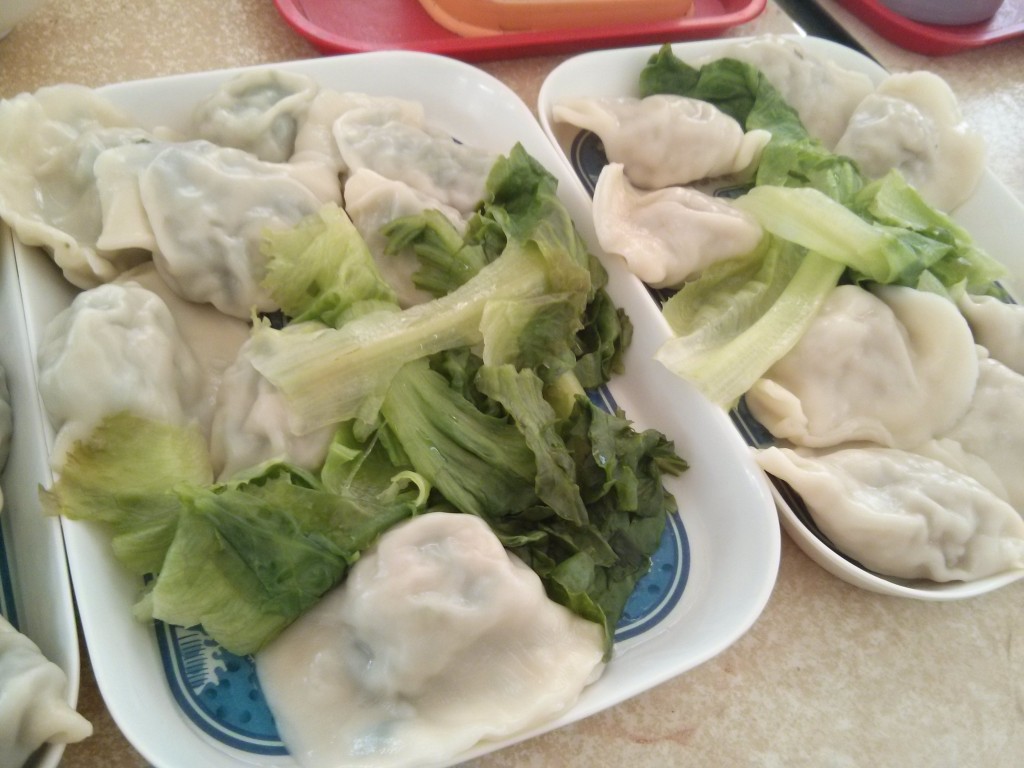Minglei: Hins Cheung’s Favorite Guangzhou Breakfast Diner
Posted: 04/11/2014 12:52 pm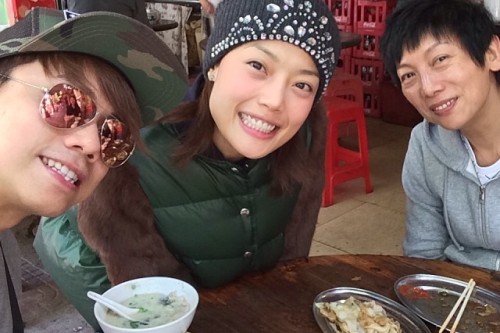
Hong Kong pop singers Hins Cheung (left) and Joey Yung (middle) have breakfast at Minglei restaurant in Guangzhou. (photo: Hins’ weibo)
Rice noodle roll and congee are the classic symbols of a good, hearty Cantonese breakfast. Thousands of restaurants sell them across Guangzhou as part of their menu, but it’s the 20 year-old Minglei Restaurant that stands apart by bringing you back to 1990s with its “retro” feeling.
Minglei restaurant caught the public’s attention when it was promoted by its big fan, Hong Kong pop singer Hins Cheung. The word is that Hins will go to Minglei and order four beef dishes of rice noodle roll every time he comes to Guangzhou.
Taste
Called “coeng fan” (腸粉) in Cantonese, rice noodle roll is made with steamed rice milk and can be filled with such varied ingredients like beef, barbeque pork (“caa siu”, or叉燒) and shrimp. Sweet soy sauce is poured over the dish before serving.
The key to make a successful coeng fan is to make them “thin, smooth and light”. Compared with other restaurants in Guangzhou, Minglei definitely scores well in this department. As well, many restaurants make their soy sauce very salty and greasy, but Minglei clearly has the experience to provide theirs with a light, sweet touch.
However, the most amazing part of Minglei’s take on the classic Cantonese dish is that it contains a mysterious flavor usually found only in 90’s-era dishes. The taste is a little bit like the Chinese “Wok Hei flavor,” but not that strong. Whether the taste comes from the steaming machine or the source of cooking fuel, it was a nostalgic return to my Cantonese childhood.
Moving on to the other important part of a balanced Cantonese breakfast, congee is a type of rice porridge popular in Guangzhou. Called “zuk” (粥) in Cantonese, it is a good side dish to be served alongside rice noodle roll. Just the same as with coeng fan, various added ingredients will complement the body of the dish such as meat, fish or liver.
Minglei’s congee tastes very rich because the chef cooks it in a small pot that brings ample heat to the rice and the meat. I would personally recommend the rice porridge called “soeng zaap zuk”, a classic congee in Guangzhou that contains innards.
Surrounding & Price
Minglei is located in historic Fangcun, the old city of Guangzhou. It is small, simple and crude, and the restaurant does not have enough waitresses; however, the staff in there are all friendly. It doesn’t have an English menu and most of the customers of Minglei are locals, meaning Putonghua is not as popular as Cantonese. All in all, if you want to enjoy the local lifestyle, Minglei is a good place to try.
The prices are very cheap; dishes sell for only five or six RMB each. Four beef coeng fan and one congee only cost 22 yuan, so it doesn’t actually cost that much to eat like a Hong Kong pop singer after all.
- Hong Kong pop singers Hins Cheung(left) and Joey Yung(middle) have breakfast at Minglei restaurant in Guangzhou. (photo: Hins’ weibo)
Address
广州市荔湾区芳村大道中山村路F14
F14 Shancun Lu, Fangcun Da Dao Zhong, Liwan district, Guangzhou
Photos: Charles Tian, Hins Cheung’s Weibo

